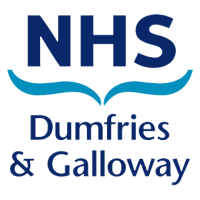- Check demographics page to ensure correct contact details.
- Complete and document a risk assessment which should be repeated at every visit.
- Outline the young person’s rights with respect to confidentiality, including the ways information may be used and the limits to confidentiality, as for all consultations (see your Health Board Confidentiality Policy; Data Protection & confidentiality leaflet).
- Discuss issues of confidentiality and highlight that you may need to share information if you have concerns about their wellbeing and safety.
- Consider the intellectual age of the young person or any special needs they may have, e.g., learning disabilities or being looked after or accommodated?
- Consider who else was present at the consultation? Specify the relationship and document it in the notes (e.g., friend/ carer/ partner).
- It is best practice to see the young person alone for at least part of consultation – consider strategies to achieve this in your service and document if it has not been possible.
Young person's risk assessment

Ensure accurate documentation of the consultation. In addition to relevant clinical information, contact details, the name of any known social work contact, and the school or college attended should be recorded in the case note. A specially designed proforma (the young person’s risk assessment) for those under 16 and those under 18 who are looked after and accommodated or otherwise vulnerable should also be completed at every visit (see references below).
The following is a list of issues that should be considered and asked. It is not a checklist, but the more areas that are covered the better chance of picking up on young people at risk of sexual harm/exploitation. It may not be possible to do this at every visit, but any gaps should be filled at subsequent visits if possible.
- Do they attend School/ referral unit/ college/ employment/ training? – specify which.
- Do they attend regularly and enjoy going?
- Can they talk to anyone there?
- Who do they live with?
- How are things at home?
- Do they have anyone they can talk to at home?
- Ascertain if they are a young carer, a looked after or accommodated child, homeless, bereaved or have a disability.
- Do they have other agencies involved in their care, e.g. social work or mental health teams?
- Are they currently sexually active or planning sexual activity?
- Ask them to clarify what they understand about sexual activity – e.g., penetrative vaginal, anal or oral sex.
- If so, what was their age at first sexual contact?
- When did they last have sexual contact?
- Are they happy with the person they are having sexual contact with?
- What is the age of their sexual partner(s)?
- How many people have they had sexual contact with in the last 3 months?
- How many people have they had sex with in the last 12 months?
- Where did they meet the person they are having sexual contact with and where do they have sex?
- Are there occasions where anyone else has been present when they have been having sex?
- Does the person they are having sex with make them scared or uncomfortable, or force/intimidate them in to having sex/types of sex?
- Is there a history of being forced into having sexual contact with someone recently, or even as a younger child?
- Do they use alcohol or drugs at any time, including when they have sex?
- Are they being given gifts/ money/ mobile phones/ protection in exchange for sexual acts or other tasks?
- Do they feel depressed or low in mood?
- Is there a history of self harm?
- Have they been asked to send images of themselves naked to anyone, or does anyone have images of them naked?
Be aware that they may perceive their situation as consensual when in fact they are being groomed, as may be the nature of sexual exploitation.
Have you any child protection concerns? If they are concerns that warrant immediate action, have you discussed them with a senior member of staff/ the consultant on call? What action is to be taken?
Have you any other concerns that need addressed? If so:
- Have you discussed these?
- What action is to be taken?
- Spotting the Signs: a national proforma for identifying risk of child sexual exploitation in sexual health services [Internet]. Department of Health; 2014 Apr [cited 2023 Jan 20]. Available from: https://legacy.brook.org.uk/our-work/spotting-the-signs-cse-national-proforma
